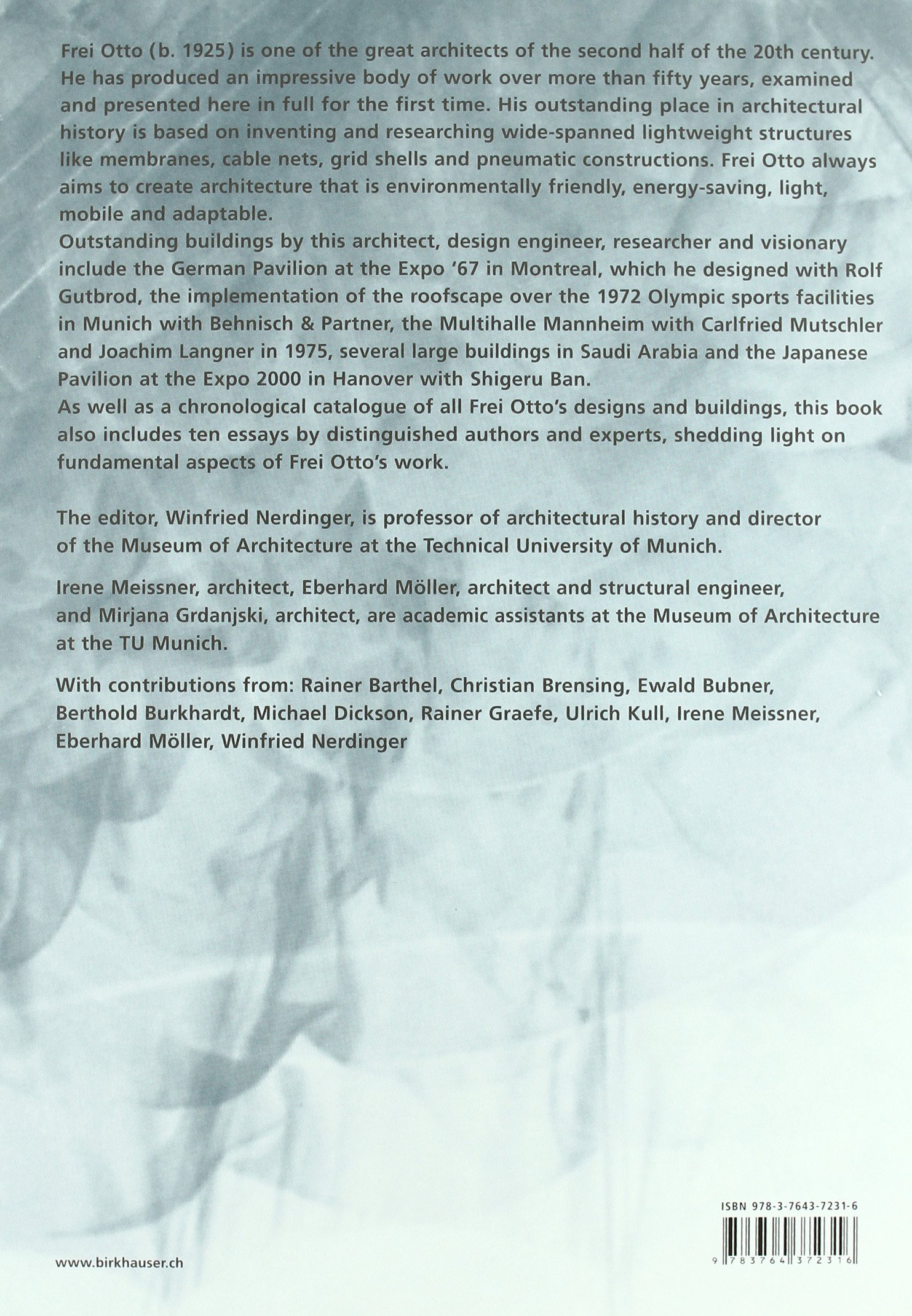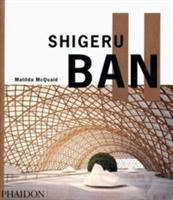Frei Otto | Winfried Nerdinger

Detalii Frei Otto | Winfried
Produs actualizat în urmă cu 1 lună
Descriere YEO:
Descriere magazin:
Frei Otto, awarded the Royal Gold Medal 2006 by the Royal Institute of British Architects, is one of Germanys most innovative architects in the second half of the 20th century. He taught at the MIT in Cambridge before founding an internationally renowned Institute for Lightweight Structures in 1964. Frei Ottos systematic research of a lightweight and adaptable construction, his early dedication to environment and ecology as well as his impressive personality turned him into an outstanding architect. His works offer an inexhaustible source of inspiration and reflection.Amongst his main works are the German Pavilion for the 1967 World Exhibition in Montreal, the roof for the Munich Olympic Stadium (in collaboration with G. Behnisch), the IBAs ecological houses in 1985 in Berlin, numerous tent-like constructions for Saudi Arabia, as well as temporary tent and membrane structures, including one for the Pink Floyd tour in 1978. He also collaborated on the Japanese Pavilion for the EXPO 2000 in Hanover, and the project for Stuttgarts main railway station.In this volume, prominent authors analyse and discuss the key aspects of Frei Ottos work. In addition it contains an extensive and detailed catalogue of over 200 buildings and projects dating from the years 19512004.


Frei Otto | Winfried - Disponibil la carturesti.ro
Pe YEO găsești Frei Otto | Winfried de la Birkhäuser, în categoria Carte straina.
Indiferent de nevoile tale, Frei Otto | Winfried Nerdinger din categoria Carte straina îți poate aduce un echilibru perfect între calitate și preț, cu avantaje practice și moderne.
Caracteristici și Avantaje ale produsului Frei Otto | Winfried
- Departament: gaming-carti-birotica
- Ideal pentru pasionații de jocuri, birotică și distracție online.
Preț: 406 Lei
Caracteristicile produsului Frei Otto | Winfried
- Brand: Birkhäuser
- Categoria: Carte straina
- Magazin: carturesti.ro
- Ultima actualizare: 27-10-2025 01:24:43
Comandă Frei Otto | Winfried Online, Simplu și Rapid
Prin intermediul platformei YEO, poți comanda Frei Otto | Winfried de la carturesti.ro rapid și în siguranță. Bucură-te de o experiență de cumpărături online optimizată și descoperă cele mai bune oferte actualizate constant.
Descriere magazin:
Frei Otto, awarded the Royal Gold Medal 2006 by the Royal Institute of British Architects, is one of Germanys most innovative architects in the second half of the 20th century. He taught at the MIT in Cambridge before founding an internationally renowned Institute for Lightweight Structures in 1964. Frei Ottos systematic research of a lightweight and adaptable construction, his early dedication to environment and ecology as well as his impressive personality turned him into an outstanding architect. His works offer an inexhaustible source of inspiration and reflection.Amongst his main works are the German Pavilion for the 1967 World Exhibition in Montreal, the roof for the Munich Olympic Stadium (in collaboration with G. Behnisch), the IBAs ecological houses in 1985 in Berlin, numerous tent-like constructions for Saudi Arabia, as well as temporary tent and membrane structures, including one for the Pink Floyd tour in 1978. He also collaborated on the Japanese Pavilion for the EXPO 2000 in Hanover, and the project for Stuttgarts main railway station.In this volume, prominent authors analyse and discuss the key aspects of Frei Ottos work. In addition it contains an extensive and detailed catalogue of over 200 buildings and projects dating from the years 19512004.


Produse asemănătoare

Frei Otto: Building with Nature - Joaquín Medina Warmburg
![]() libris.ro
libris.ro
Actualizat in 28/10/2025
362.7 Lei

